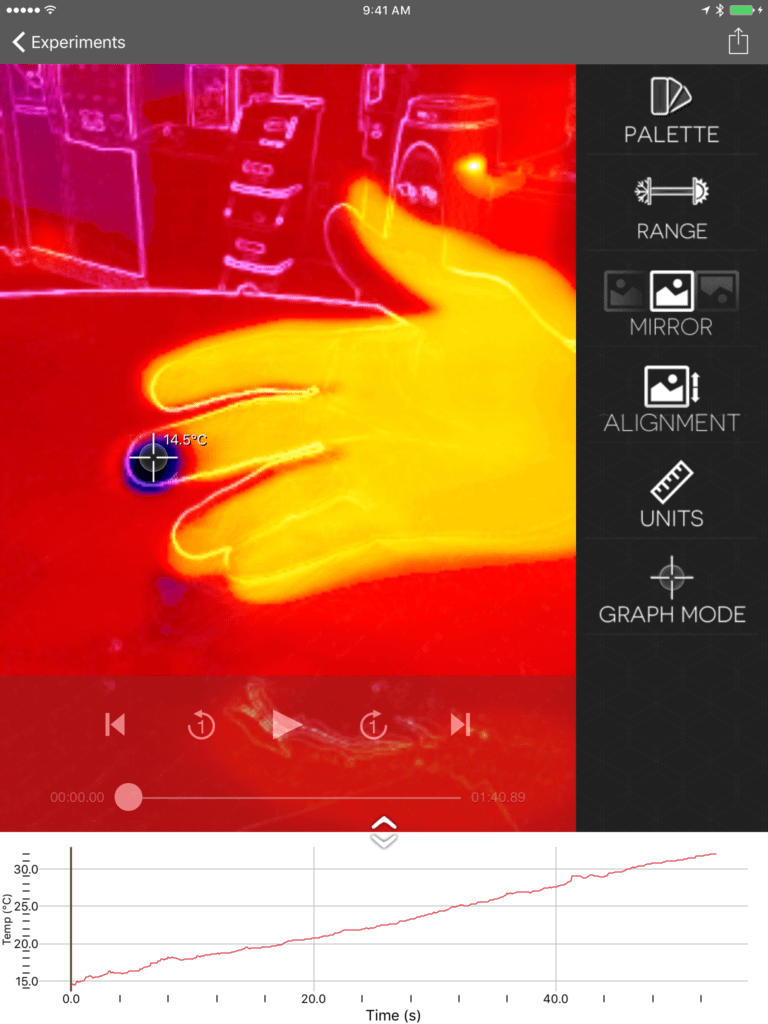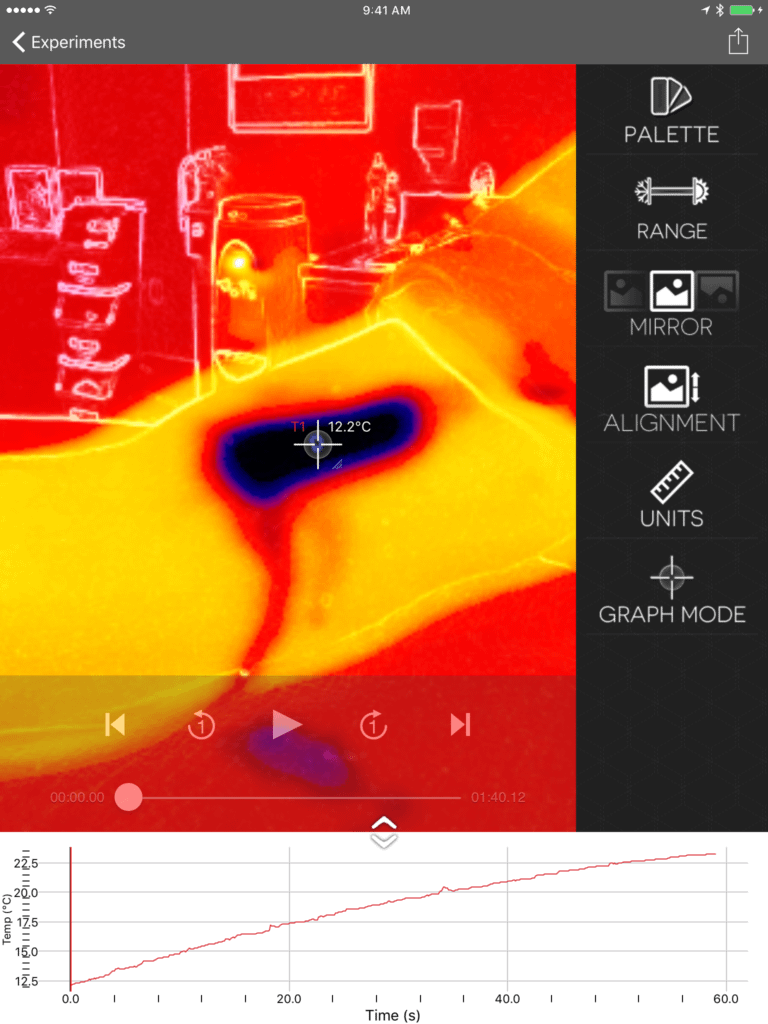The Physics Department at Vernier challenged the Biology Department to develop an experiment for the FLIR ONE Thermal Camera and the Vernier Thermal Analysis app. Our physiologist realized that Experiment 2, “Effect of Skin Vascularity on Temperature Recovery,” in Human Physiology with Vernier would be perfect. The experiment uses a Surface Temperature Sensor to look at the rate at which the skin warms after being cooled by an ice cube. Areas with more vascularity recover faster than areas with less vascularity.
After testing the FLIR ONE Thermal Camera, we determined that it can be used to perform this popular lab activity instead of using the Surface Temperature Sensor. The data indicate that the fingertip warms much faster than the skin of the bicep after cooling, as shown in the pictures above. To determine the actual rate of warming, data from the Vernier Thermal Analysis app were exported to Graphical Analysis, where a linear fit could be applied. This analysis showed that the fingertip warmed almost twice as fast as the skin of the bicep after 60 s of recovery.
A version of this experiment, written for the FLIR ONE Thermal Camera and the Vernier Thermal Analysis app for iOS, along with updated versions using the Surface Temperature Sensor for Logger Pro and LabQuest App, are available for download.
Download Effect of Skin Vascularity on Temperature Recovery »
If you have any questions about this modified activity or other questions about human physiology, feel free to contact physiology@vernier.com


